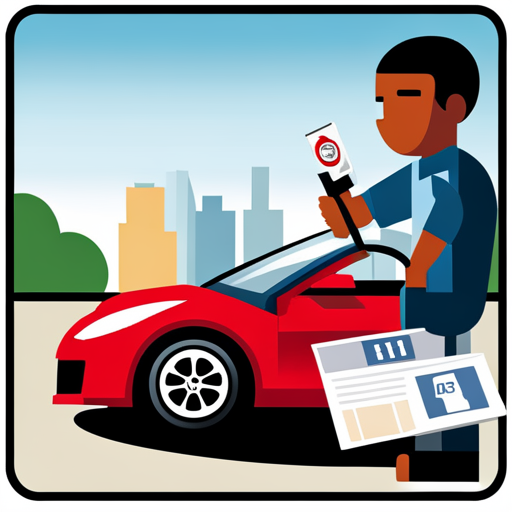"Cherishing Little Steps - A Haven for Baby and Family Journeys"
Preparing for Teen Driving Test
Are you ready to embark on the exciting journey of becoming a licensed driver? As you prepare for your teen driving test, there are important steps to take to ensure your success.
In this guide, we will walk you through the process of preparing for your test and equipping you with the necessary knowledge and skills to ace it.
From understanding the required paperwork to mastering the rules of the road, we will cover everything you need to know.
Along the way, we will also offer tips to help you manage any nerves you may have on test day.
So, let’s get started on this adventure of becoming a confident and responsible driver!
Key Takeaways
- Gather all required documents and paperwork, including proof of identity, proof of residency, social security card, completed application form, and learner’s permit.
- Familiarize yourself with the driving test process by arriving early, using turn signals and checking blind spots, obeying traffic signs and signals, and demonstrating good observation skills.
- Develop essential driving skills by practicing regularly, mastering various driving maneuvers, driving in different weather conditions, navigating through heavy traffic, and making quick decisions in stressful situations.
- Practice defensive driving techniques such as emergency maneuvers, familiarizing yourself with road signs and signals, staying alert and aware of your surroundings, anticipating potential hazards, and avoiding distractions while driving.
Required Documents and Paperwork

Before you can take the teen driving test, you need to gather all the required documents and paperwork.
Ensuring you have the necessary documentation not only demonstrates your eligibility for a driver’s license but also emphasizes the importance of road safety.
The first document you’ll need is proof of identity, such as a birth certificate or passport. Additionally, you must provide proof of residency, such as a utility bill or lease agreement, to establish your address. It’s crucial to bring your Social Security card or a valid Social Security number as well.
Furthermore, you’ll need to bring a completed application form, which can usually be obtained online or at the Department of Motor Vehicles (DMV). Lastly, don’t forget to bring your learner’s permit, as this is required to take the driving test.
Understanding the Driving Test Process

To understand the driving test process, you’ll need to know what to expect on the day of your test. Here are some driving test tips and common mistakes to help you navigate through the process smoothly.
Firstly, arrive early for your test to give yourself time to relax and get familiar with the testing location. Take deep breaths and stay calm throughout the test. Remember to use your turn signals, check your blind spots, and obey all traffic signs and signals. Use smooth and controlled movements when accelerating, braking, and steering.
During the test, the examiner will assess your ability to drive safely and follow the rules of the road. Be aware of your surroundings and demonstrate good observation skills. Avoid common mistakes such as failing to check mirrors, not maintaining a safe distance from other vehicles, or making abrupt lane changes.
It is important to remember that mistakes happen, but try not to dwell on them. Stay focused, maintain a positive attitude, and keep your eyes on the road at all times.
Developing Essential Driving Skills

To successfully navigate the driving test process, you must acquire and master essential driving skills. Building confidence is crucial, as it allows you to remain calm and focused behind the wheel. One way to build confidence is through practice. Spend ample time practicing various driving maneuvers such as parking, changing lanes, and making turns. This will help you become familiar with the controls of the vehicle and develop muscle memory.
Another essential skill is handling different driving conditions. It’s important to be prepared for all types of weather conditions such as rain, fog, or snow. Practice driving in these conditions to understand how your vehicle handles and how to adjust your driving accordingly. Additionally, learn how to navigate through heavy traffic and busy intersections. This will help you become more comfortable and capable of making quick decisions in stressful situations.
Practicing Defensive Driving Techniques

Developing strong defensive driving skills is essential for passing your teen driving test. Practicing defensive driving techniques won’t only help you become a safer driver, but it will also increase your chances of passing the test with flying colors. Here are some important tips to keep in mind:
-
Practicing emergency maneuvers: It’s crucial to be prepared for unexpected situations on the road. Practice emergency stops, quick lane changes, and evasive maneuvers in a controlled environment. This will help you react quickly and effectively in real-life situations.
-
Understanding road signs and signals: Familiarize yourself with the meaning of different road signs and signals. Pay attention to their shapes, colors, and symbols. Knowing what each sign means will help you make informed decisions while driving and ensure your safety on the road.
-
Staying alert and aware: Defensive driving requires you to be constantly aware of your surroundings. Keep an eye on the behavior of other drivers, anticipate potential hazards, and maintain a safe following distance. Avoid distractions such as texting or using your phone while driving.
Mastering the Rules of the Road

Learn and apply the rules of the road to confidently navigate any driving situation. Developing safe habits and mastering road sign recognition are essential for becoming a responsible and skilled driver. By understanding and following these rules, you can ensure your safety and the safety of others on the road.
To help you grasp the importance of these rules, let’s take a look at the following table:
| Rule of the Road | Importance | Emotion |
|---|---|---|
| Obey Speed Limits | Prevent Accidents | Safety |
| Yield to Pedestrians | Show Respect | Consideration |
| Stop at Red Lights | Avoid Collisions | Responsibility |
By internalizing these rules, you will develop safe driving habits that become second nature. This will enable you to make quick decisions and respond appropriately in various traffic situations.
Additionally, road sign recognition is crucial for understanding and following the rules of the road. Signs provide important information about speed limits, directions, and potential hazards. By practicing and familiarizing yourself with different road signs, you will be able to navigate unfamiliar roads confidently and safely.
Tips for Managing Test Day Nerves

One important aspect of preparing for your teen driving test is managing test day nerves. It’s natural to feel anxious about taking the test, but with some tips for staying calm, you can overcome your test anxiety and perform your best on the big day. Here are three strategies to help you manage your nerves:
-
Prepare and practice: The more prepared you are, the more confident you’ll feel. Study the rules of the road, practice driving with a licensed adult, and review the specific requirements of the test. The more familiar you’re with the material and the driving experience, the less anxious you’ll be.
-
Take deep breaths: Deep breathing exercises can help calm your nerves and reduce anxiety. Before the test, take a few moments to breathe deeply and slowly. Inhale deeply through your nose, hold for a few seconds, and exhale slowly through your mouth. Repeat this process a few times to help relax your body and mind.
-
Positive self-talk: Replace negative thoughts with positive affirmations. Instead of telling yourself you’ll fail, remind yourself of the hard work you’ve put in and the skills you’ve developed. Repeat positive statements such as ‘I am prepared’ or ‘I can do this’ to boost your confidence and reduce anxiety.
Frequently Asked Questions
Is There a Specific Age Requirement to Take the Teen Driving Test?
To take the teen driving test, you must meet the age requirement set by your state. Make sure you check with your local DMV to find out the specific age requirement before preparing for the test.
What Should I Do if I Lose My Learner’s Permit?
If you lose your learner’s permit, don’t worry! Reapplying for a new one is easy. Just follow these steps: visit the DMV, fill out a form, pay a fee, and provide necessary identification. It’s a simple process!
Can I Take the Driving Test in a Car That Is Not Registered in My Name?
You can take the driving test in a car that is not registered in your name. For example, you can use your parent’s car or borrow a friend’s car for the test.
How Long Is the Driving Test Valid For?
The duration of the driving test can vary depending on where you live, but typically it is valid for a certain period of time, usually around two years, before it expires.
Are There Any Specific Medical Conditions That Would Prevent a Teenager From Taking the Driving Test?
Having certain medical conditions may prevent you from taking the teen driving test. It’s important to check with your doctor and the DMV to see if any specific conditions pose a barrier.
Conclusion
Now that you have all the necessary documents and have familiarized yourself with the driving test process, it’s time to develop your essential driving skills. Remember to practice defensive driving techniques and master the rules of the road.
On test day, manage your nerves by staying calm and focused. By following these steps, you’ll be well-prepared to ace your teen driving test and embark on a safe and confident driving journey.


